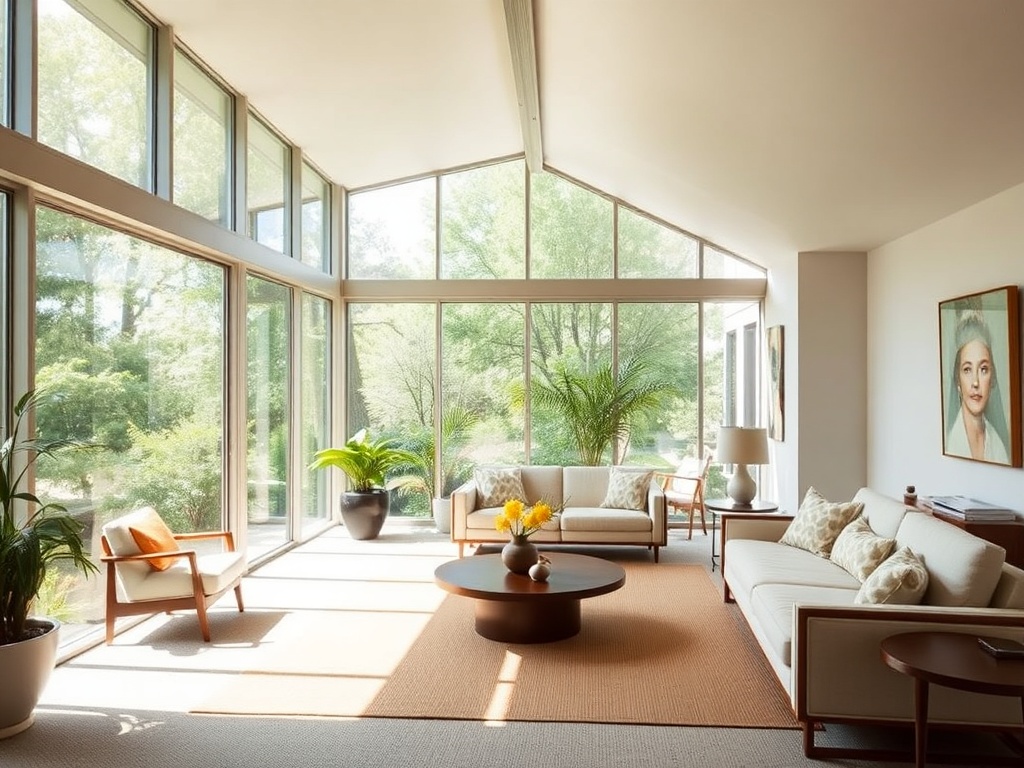Mid-century modern furniture design elegantly blends simplicity with functionality, bringing a timeless charm to any living space. Whether you’re a seasoned collector or just beginning to explore this iconic style, this blog will guide you through essential pieces and design tips to create a harmonious mid-century modern living room.
The Origins of Mid-Century Modern Design
The mid-century modern movement emerged in the mid-20th century, influenced by the Bauhaus and Scandinavian design principles that emphasized clean lines, organic forms, and functionality. This style became popular for its ability to bridge the indoors with nature, often incorporating large windows and natural materials. Imagine an image capturing a classic Eichler home interior, showcasing floor-to-ceiling windows and minimalist furnishings, highlighting the era’s architectural ingenuity.

Iconic Furniture Pieces to Consider
Incorporating iconic mid-century modern pieces can instantly elevate your living room’s aesthetic. Look for items like the Eames Lounge Chair and Ottoman, the Noguchi Coffee Table, and the Arco Floor Lamp. Each piece is not just furniture but a work of art that tells a story. Picture a well-styled living room featuring these pieces, each with its unique silhouette and material, inviting comfort and style.

Choosing the Right Sofa
The sofa often serves as the centerpiece of a living room. In mid-century modern design, sofas are typically low-profile with streamlined shapes. Opt for materials like leather or tweed in neutral or bold colors. Visualize a sleek, tufted leather sofa in a muted tone, accompanied by vibrant throw pillows to add a pop of color.

The Role of Wood in Mid-Century Modern Design
Wood plays a significant role in mid-century modern interiors, providing warmth and texture. Teak, walnut, and oak are popular choices for furniture like credenzas, sideboards, and coffee tables. Envision an image of a beautifully crafted teak credenza, its rich grain and warm hues adding depth to the space.

Incorporating Color and Patterns
While mid-century modern is known for its minimalist approach, it also embraces vibrant colors and geometric patterns. Incorporate these elements through rugs, cushions, and artwork. Imagine a cozy living room where a geometric-patterned rug anchors the space, complemented by colorful cushions and abstract art on the walls.

Lighting: A Balance of Form and Function
Lighting in mid-century modern design is both functional and sculptural. Consider ceiling fixtures, floor lamps, and table lamps that feature unique shapes and materials like metal and glass. Visualize a room illuminated by a sputnik chandelier, casting intricate shadows and adding an artistic flair.
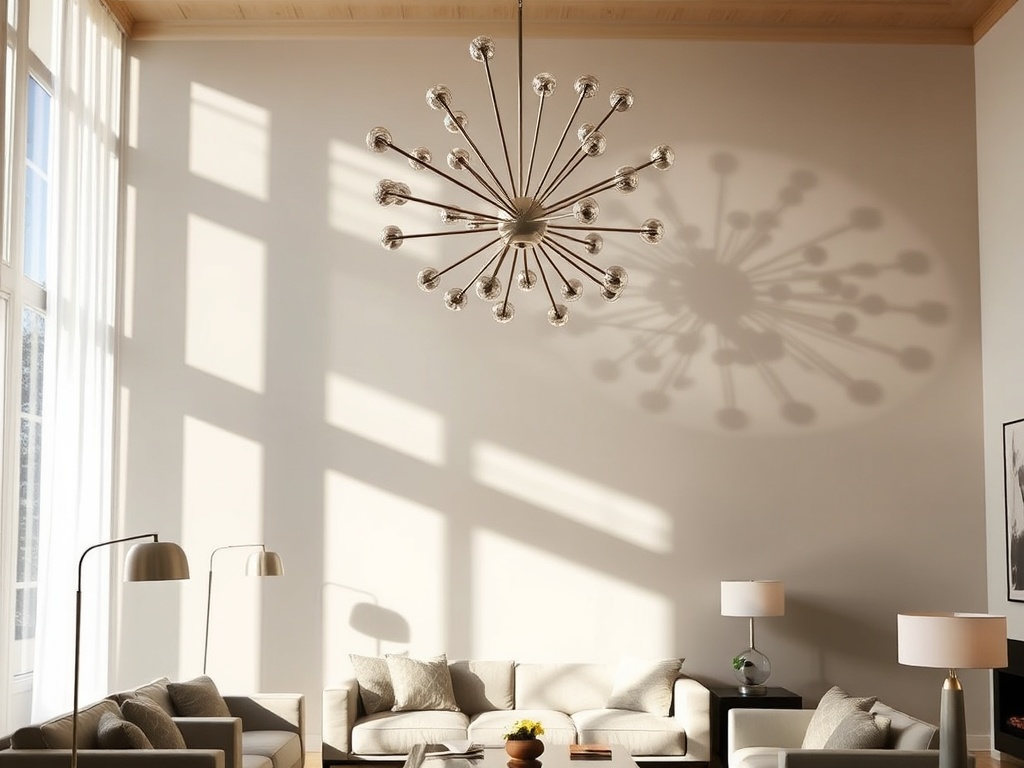
Accessorizing with Vintage Finds
Vintage accessories can enhance the mid-century modern vibe, adding character and nostalgia. Look for vintage clocks, ceramic vases, and retro art pieces. Picture a living room shelf adorned with a collection of vintage ceramics and a classic starburst clock, each piece telling its own story.

The Importance of Texture
Texture plays a crucial role in creating a dynamic mid-century modern living room. Mix materials like leather, wool, metal, and wood to add depth. Imagine a setting where a woolen rug, leather armchair, and metal floor lamp coexist, each contributing to a tactile and visually engaging environment.

Creating a Seamless Indoor-Outdoor Flow
Mid-century modern design often blurs the line between indoor and outdoor spaces. Large windows and sliding doors can facilitate this connection. Visualize a living room opening onto a patio, with plants both inside and out, creating a harmonious flow with nature.

The Art of Minimalism
Minimalism is at the heart of mid-century modern design. Focus on essential furniture pieces and avoid clutter. Picture a living space with a few carefully chosen pieces, where each item has a purpose and complements the overall aesthetic.

Selecting the Perfect Coffee Table
A coffee table can serve as a focal point in a mid-century modern living room. Opt for designs with clean lines and interesting materials like glass, metal, or wood. Envision a room where a Noguchi or Saarinen coffee table takes center stage, complemented by sleek seating.

Incorporating Greenery
Plants are a natural fit for mid-century modern interiors, adding life and color. Consider placing potted succulents or a fiddle leaf fig tree to enhance the organic feel. Visualize a room with strategically placed plants, their green leaves contrasting against the clean lines of the furniture.
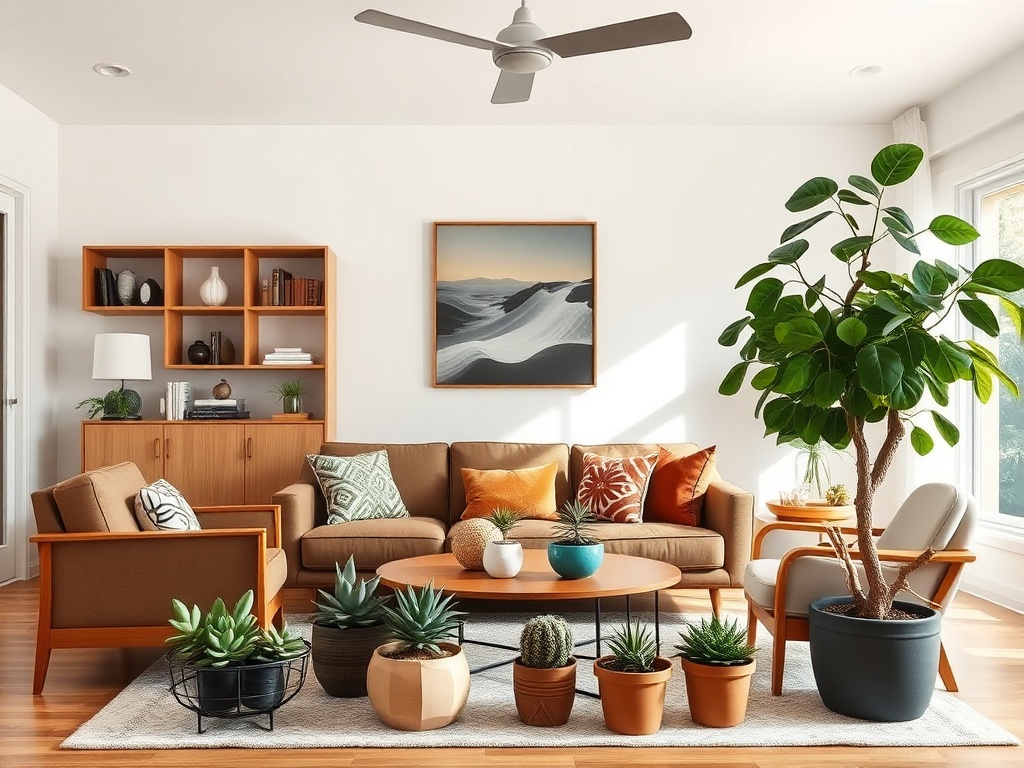
Personalizing with Art and Decor
Art is a powerful way to personalize your living room. Choose pieces that resonate with you, whether abstract, pop art, or photography. Picture a living room wall adorned with a curated collection of art pieces, each reflecting the owner’s taste and style.

The Role of Rugs in Mid-Century Modern Design
Rugs can define spaces and add warmth to a mid-century modern living room. Look for designs with geometric patterns or subtle textures. Imagine a room where a patterned rug ties together the color scheme, providing a soft underfoot contrast to the hard lines of the furniture.
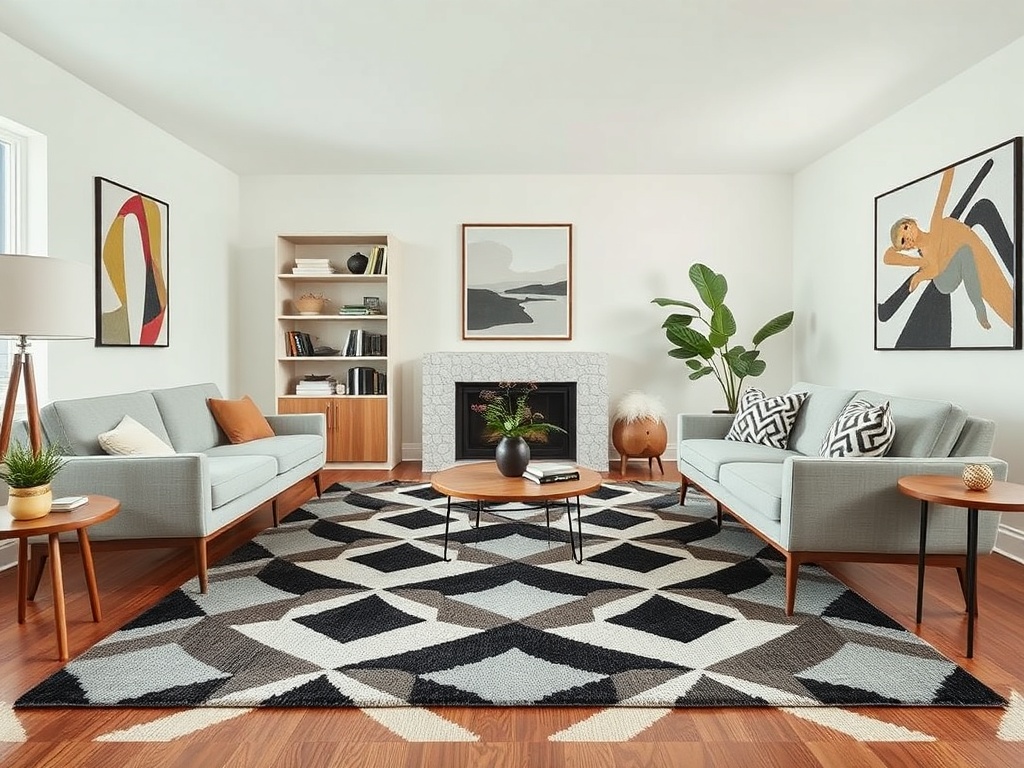
Balancing Old and New
Blending vintage mid-century pieces with contemporary elements can create a dynamic and personalized space. Combine a retro sofa with a modern coffee table or vice versa. Visualize a living room where old and new coexist, each enhancing the other’s beauty.
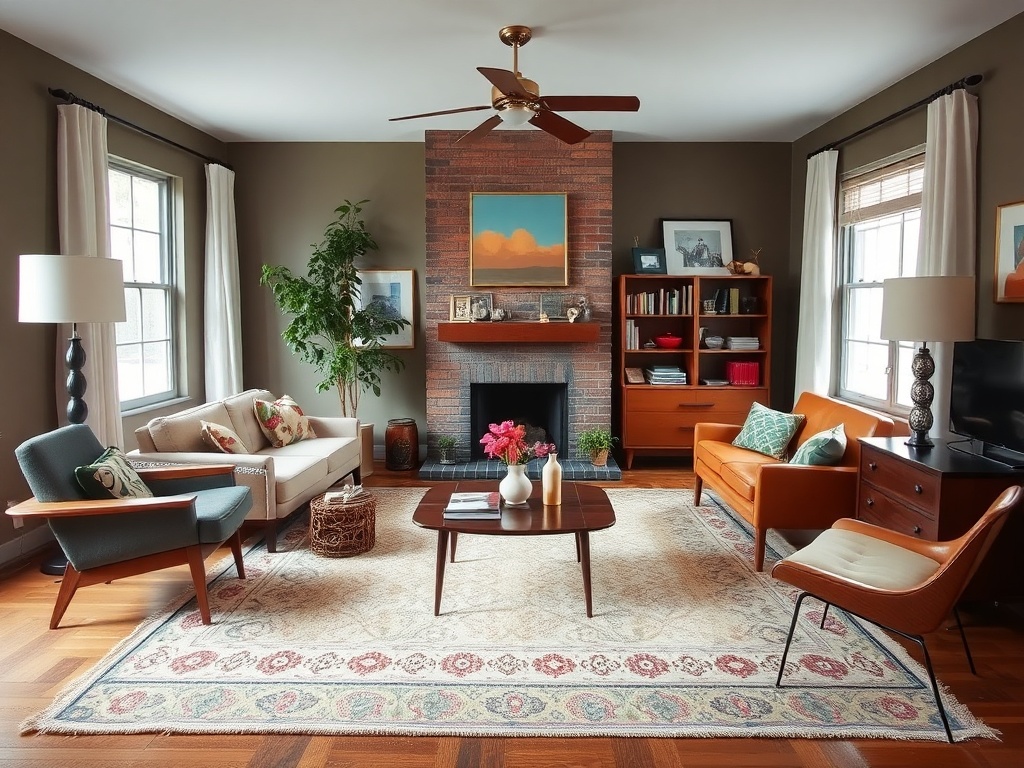
The Influence of Designers
Designers like Charles and Ray Eames, Arne Jacobsen, and George Nelson have left a lasting impact on mid-century modern design. Their creations continue to inspire modern interiors. Picture a gallery of iconic designer pieces, each representing a milestone in design history.
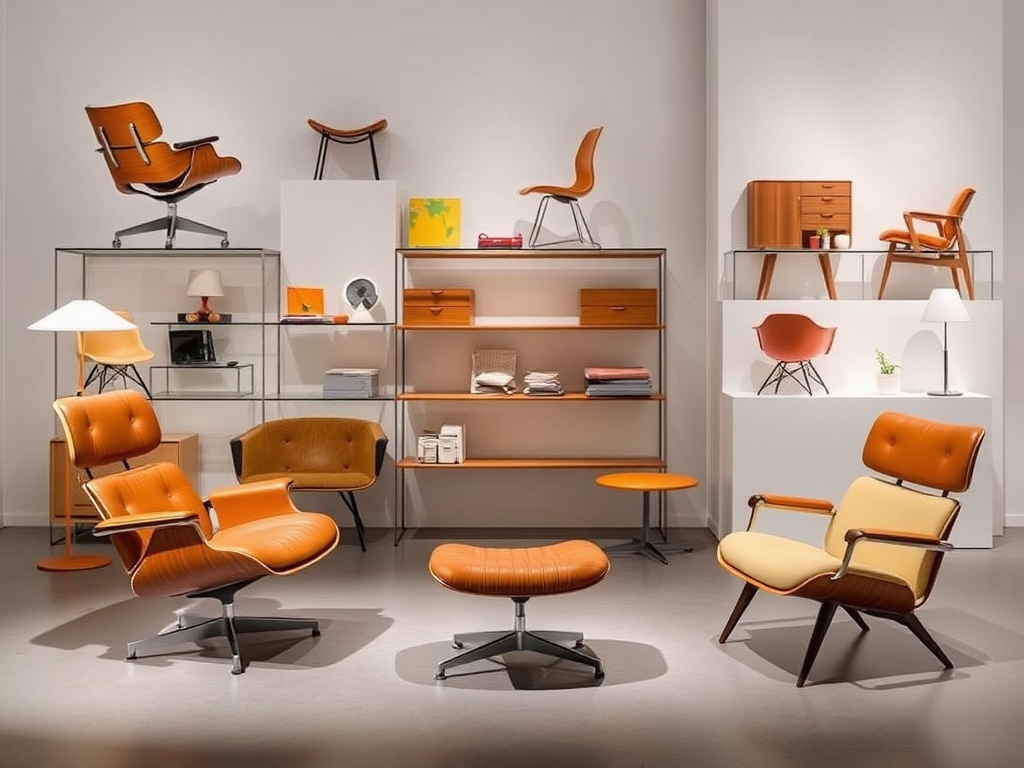
Functionality and Comfort
Mid-century modern design emphasizes the marriage of functionality and comfort. Furniture is not only aesthetically pleasing but also designed for everyday use. Envision a living room where every piece, from the sofa to the side table, is both practical and stylish.

Creating a Focal Point
Every living room benefits from a focal point, whether it’s a fireplace, a piece of art, or a statement furniture piece. In mid-century modern design, these elements are often understated yet impactful. Imagine a room where a minimalist fireplace or an oversized piece of art draws the eye and anchors the space.
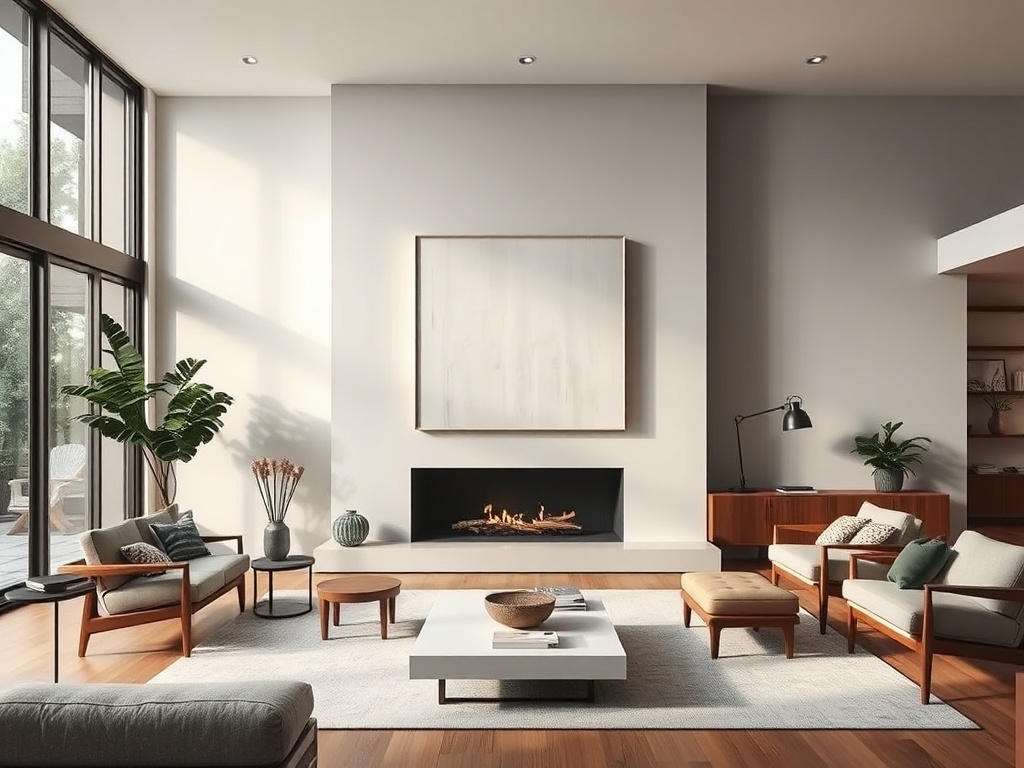
Sustainability in Mid-Century Modern Design
The timeless nature of mid-century modern design aligns well with sustainable living. Investing in quality vintage pieces reduces waste and supports eco-friendly practices. Picture a living room filled with lovingly restored vintage furniture, each piece contributing to a sustainable lifestyle.
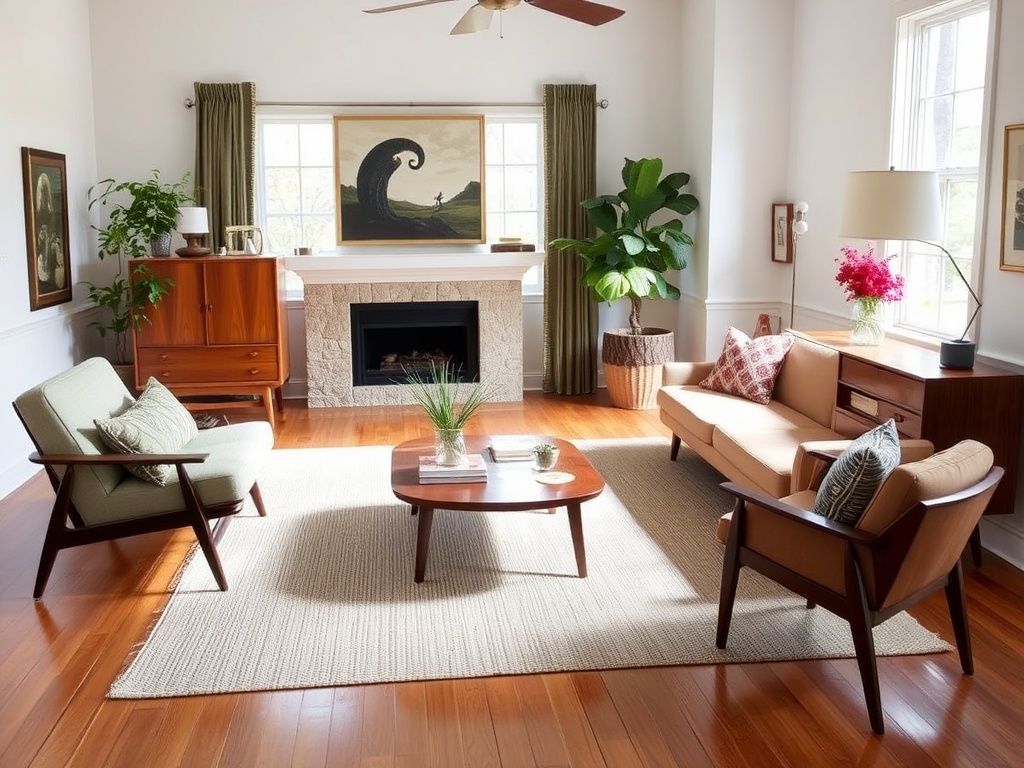
Future Trends in Mid-Century Modern Design
While mid-century modern design is rooted in the past, it continues to evolve and influence contemporary trends. Look for innovations in materials and technology that maintain the style’s essence while introducing new functionalities. Envision a futuristic living room where cutting-edge technology seamlessly integrates with classic mid-century aesthetics.

Mid-century modern living room furniture offers a perfect blend of style, functionality, and timeless appeal. By carefully selecting pieces that embody this iconic design, you can create a living space that is not only beautiful but also reflects your personal taste. As you embark on your design journey, remember to balance aesthetics with comfort, ensuring that your living room remains a welcoming retreat for years to come.
